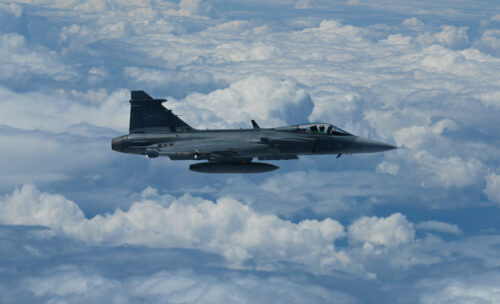In a wide-ranging interview with Radio Free Europe/Radio Liberty’s Donbas.Realii project, Brig. Gen. Sergiy Golubtsov, Chief of Aviation for the Ukrainian Air Force Command, discussed the ongoing integration of Western weapons and future plans for advanced Western fighter jets.

Golubtsov acknowledged the challenges of using Western-made bombs like JDAM (Joint Direct Attack Munition) and missiles like HARM (High-speed Anti-Radiation Missile) on Soviet-era Ukrainian aircraft. He emphasized the effectiveness of these weapons but conceded limitations due to incompatibility issues. However, he highlighted the development of Ukrainian-made guided bombs based on existing Soviet-era unguided munitions with added indigenous guidance kits. Testing of these indigenous glide bombs will commence in a few weeks. Ukrainians had to overcome the difficulties of selecting the correct wing, GPS module and control modules first.
A significant portion of the interview focused on the upcoming arrival of F-16 fighter jets. Golubtsov tempered expectations, stating that F-16s alone won’t secure air dominance for Ukraine. However, he expressed confidence that they will significantly bolster Ukrainian airpower. The interview outlined a staged approach for F-16 use, with phases dedicated to air defense, pushing back Russian aircraft, and ultimately achieving air superiority.
Golubtsov acknowledges challenges associated with integrating Western aircraft. Pilot training was identified as a key challenge. The interview underscores the importance of English language proficiency and mastering new procedures for operating Western aircraft unfamiliar to Ukrainian pilots accustomed to Soviet-era systems. Additionally, Golubtsov addressed the need to adapt Ukrainian infrastructure to properly maintain F-16 jets.
He also stressed the critical importance of robust airbase defenses for protecting F-16s. Golubtsov emphasizes the need for multiple Patriot and NASAMS batteries to counter ballistic and aerial threats, along with German Gepard anti-aircraft gun systems for close-in defense.
While F-16s are the primary focus, Golubtsov reiterated Ukraine’s strong interest in acquiring Gripen fighters from Sweden. He explained that Ukraine is currently prioritizing establishing infrastructure for the F-16, but the Gripen is a close second choice. According to Golubtsov, a significant advantage of the Gripen is its compatibility with existing Ukrainian infrastructure. Gripen fighters can reportedly operate from unimproved surfaces, eliminating the need for specialized runways. Furthermore, the Gripen is compatible with the same Western weaponry as the F-16, offering a high degree of flexibility. Golubtsov emphasized that Ukraine’s interest in acquiring Gripens is reflected in their national defense strategy documents.
The interview with Golubtsov offers valuable insights into the multifaceted challenges facing the Ukrainian Air Force as it strives to modernize its fleet and counter sophisticated Russian aerial forces. Beyond the technical hurdles of integrating Western weaponry, the interview highlights the need for a comprehensive pilot training program to ensure Ukrainian aircrews can safely and effectively leverage the capabilities of these advanced jets. Furthermore, the interview underscores the significant logistical challenges of adapting Ukrainian infrastructure to accommodate the maintenance and support requirements of Western fighter jets. Despite these complexities, Golubtsov’s comments suggest a resolute Ukrainian Air Force determined to overcome these obstacles and establish a modernized air combat capability.
For more information, hit the Source below